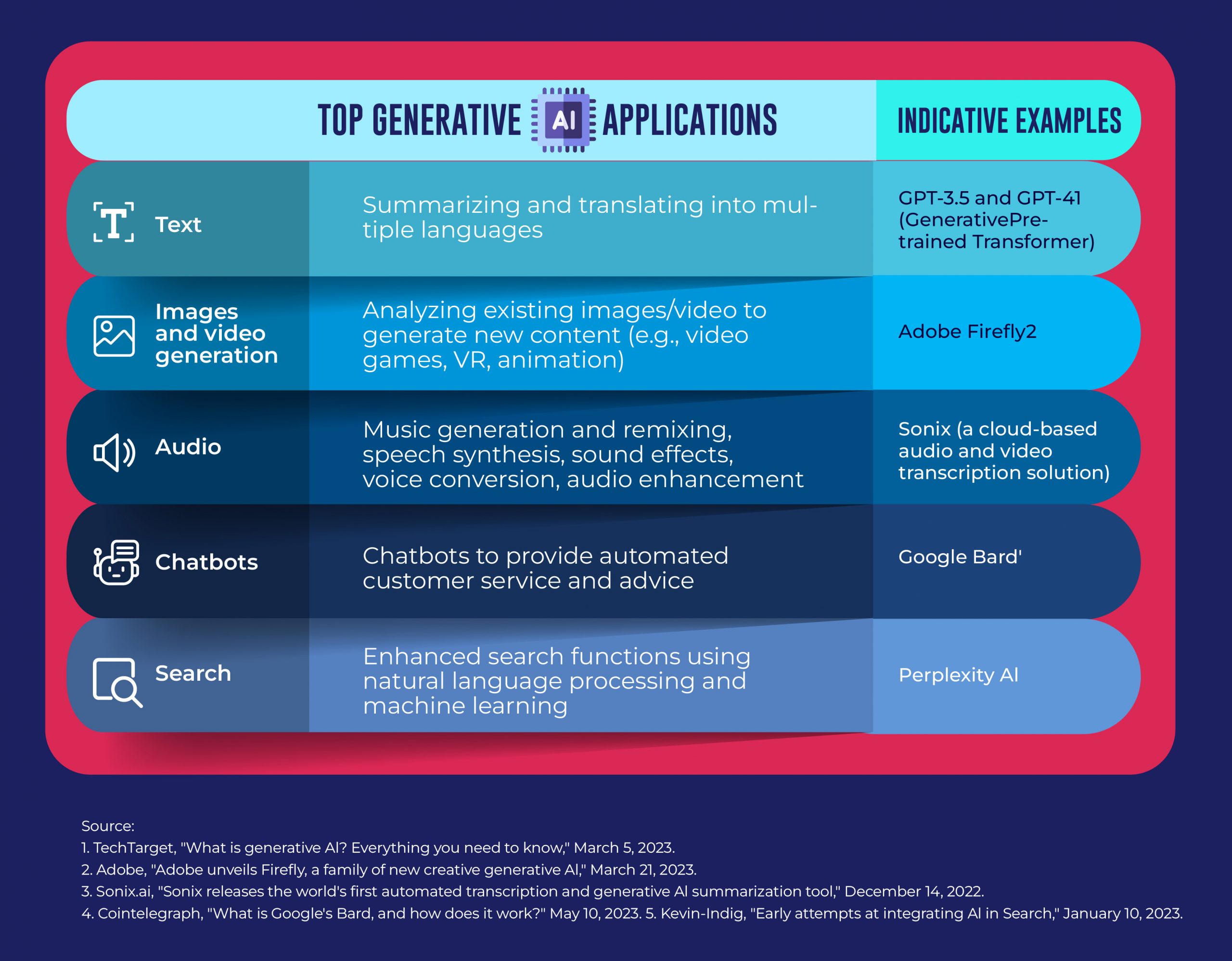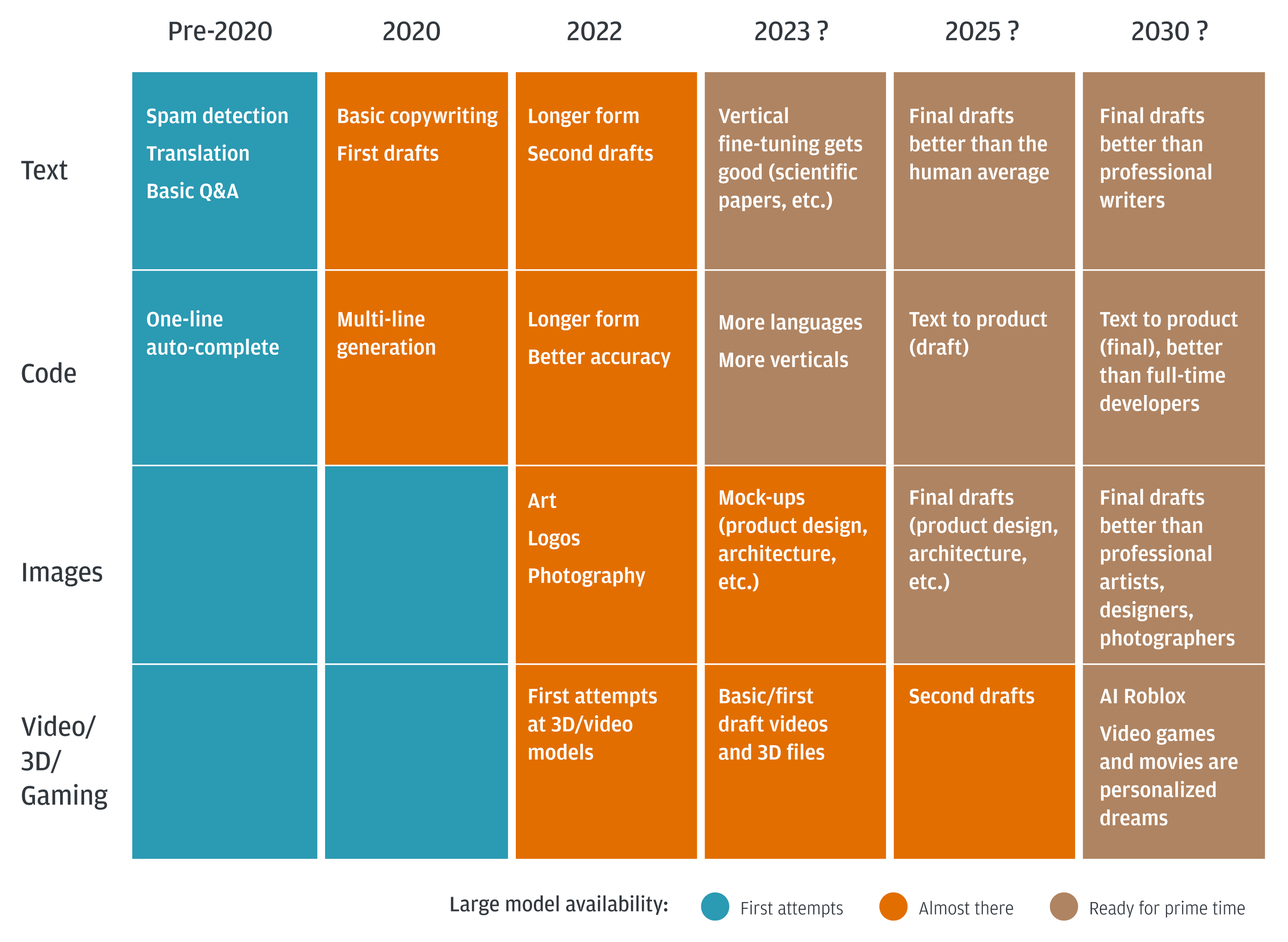Artificial intelligence is revolutionizing the banking industry, enabling financial institutions to enhance operational efficiency, improve customer experiences, and drive innovation. Core human brain functions – generating content and brainstorming – are stepping in to the domain of the machines. From medical, financial, legal and relationship advice to more – as the use cases increase- Generative AI will continue to make waves for its ability to generate new, and creative content. In digital banking, generative AI is transformative in automating processes, personalizing customer interactions, detecting fraud, and generating valuable insights.
This blog explores the rise of generative AI and its impact on driving transformation in the digital banking landscape.
Partnering with domain experts in Banking Digital Transformation like Maveric Systems brings a stellar advantage for leading FIs to forge ahead and strike early in their strategic initiatives.
Understanding Generative AI:
Generative AI is a subset of artificial intelligence that creates original and innovative content. It involves training AI models on vast amounts of data and allowing them to generate new content, such as images, text, and even human-like conversations. Unlike traditional AI models that rely on predefined rules, generative AI can produce novel and creative outputs beyond what it has been explicitly programmed to do.

Not exactly new, but Generative AI is on an evolution arc.
Recognize these use cases?
Protecting customers from fraud. Differentiating omnichannel customer experience using AI-tools including Video banking. Empowering wealth advisors with real-time CRM data on mobile apps. Using electronic virtual assistants to handle > 80% of inquiries at a fraction of the cost of the live agents.
These are offering solutions to digital banking for a few years on. It is only now that large enterprises engaged in AI development, are adopting the approach “Responsible by Design.” Consider Microsoft, which commits to making the promise of AI real—and doing it responsibly. Their approach to AI is based on three principles: meaningful innovation, empowering people and organizations, and responsibility.”
Applications of Generative AI in Digital Banking:
Enhanced Customer Interactions:
Generative AI enables digital banks to provide highly personalized and conversational customer experiences. Chatbots powered by generative AI can engage in natural language conversations, understanding customer inquiries and providing relevant and context-aware responses. These AI-powered chatbots can handle routine customer inquiries, provide product recommendations, and offer personalized financial advice, enhancing customer satisfaction and driving engagement.
Fraud Detection and Prevention:
The rise of digital transactions has also led to increased fraudulent activities. Generative AI can help digital banks identify and prevent fraud more effectively. Generative AI models can detect anomalies and predict potential fraudulent behavior by analyzing historical transactional data and patterns. This enables banks to proactively identify and mitigate risks, protecting customer assets and maintaining trust.
Risk Assessment and Underwriting:
Generative AI models can analyze customer data and generate risk profiles for loan underwriting and credit assessment. By training on historical data and customer patterns, these models can provide accurate risk assessments, enabling banks to make informed lending decisions quickly and efficiently. This helps streamline the loan approval process, reduces operational costs, and improves the customer experience.
Automated Process Automation:
Generative AI can automate and streamline various back-office processes in digital banking. From document verification to data entry and reconciliation, AI-powered systems can generate accurate and reliable results with minimal human intervention. By automating these processes, banks can reduce errors, improve operational efficiency, free up valuable human time, and dedicate it to higher-value tasks, such as customer engagement and strategic decision-making.

Data Analytics and Insights:
The massive volume of data generated by digital banking transactions presents an opportunity for generative AI to provide valuable insights. AI algorithms can analyze and interpret complex data sets, uncover patterns, and generate actionable insights for banks. These insights can enhance risk management, improve customer segmentation, optimize marketing strategies, and drive informed decision-making at all levels of the organization.
Cybersecurity and Threat Detection:
Generative AI models can play a vital role in strengthening cybersecurity defenses for digital banks. AI models can identify vulnerabilities and patterns indicative of cyber threats by analyzing network traffic, user behaviors, and historical threat data. Banks can utilize these insights to bolster their cybersecurity infrastructure, proactively detect and prevent cyber-attacks, and keep customer data safe.
Challenges and Considerations:
While the rise of generative AI presents exciting opportunities, there are important considerations and challenges for digital banks to address:
Ethical Use of Data:
Banks must ensure that generative AI models are trained on unbiased and ethically sourced data to avoid perpetuating biases or discriminatory practices.
Regulatory Compliance:
Digital banks must comply with relevant regulations and privacy laws to protect customer data and ensure transparency in using AI-generated outputs.
Trust and Transparency:
As generative AI models become more prevalent, banks must establish trust with customers by providing transparency about the use of AI and how their data is being utilized.
Continuous Learning and Adaptability:
Generative AI models require continuous learning and adaptation to stay relevant and effective. Banks should invest in ongoing model training, monitoring, and updates to ensure optimal performance and accuracy.
Conclusion
Generative AI drives digital banking transformation, enabling banks to automate processes, enhance customer experiences, detect fraud, and generate valuable insights. As digital banks continue to embrace AI technologies, generative AI will shape the future of banking. By leveraging the power of generative AI, banks can unlock new opportunities for innovation, efficiency, and personalized customer interactions, ultimately delivering enhanced value to customers and staying ahead in the rapidly evolving digital era.
About Maveric Systems
Starting in 2000, Maveric Systems is a niche, domain-led Banking Tech specialist partnering with global banks to solve business challenges through emerging technology. 3000+ tech experts use proven frameworks to empower our customers to navigate a rapidly changing environment, enabling sharper definitions of their goals and measures to achieve them.
Across retail, corporate & wealth management, Maveric accelerates digital transformation through native banking domain expertise, a customer-intimacy-led delivery model, and a vibrant leadership supported by a culture of ownership.
With centers of excellence for Data, Digital, Core Banking, and Quality Engineering, Maveric teams work in 15 countries with regional delivery capabilities in Bangalore, Chennai, Dubai, London, Poland, Riyadh, and Singapore.































